FOOTSTEPS ACROSS THE OCEAN: 50 YEARS SINCE LA BALSA SAILED ACROSS THE PACIFIC
“Survival depends on the total cooperation of all men, whether their world is a raft, a village, a country or a planet.” – Vital Alsar
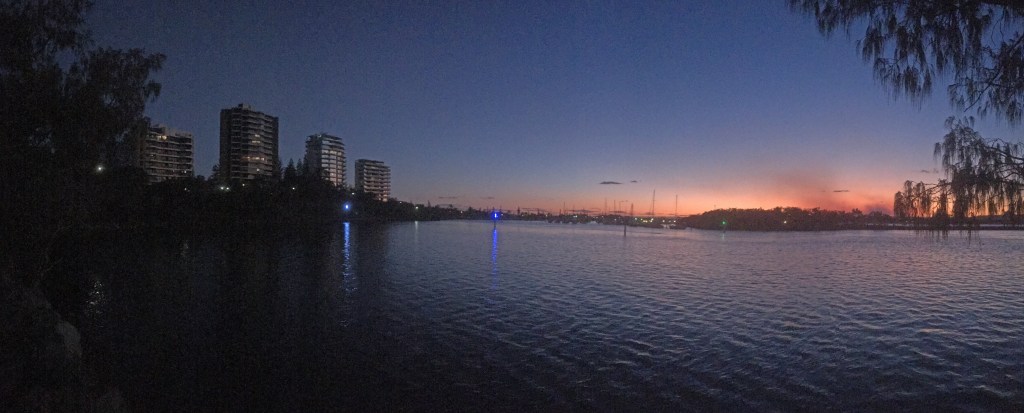
Four footprints set in concrete beside a river. Timeless testament to a voyage that not only crossed an ocean but different cultures and time.
It’s something that sits at the back of many people’s minds. Thousands of people pass it each week. A simple plaque and four footprints.
A silent reminder beneath the casuarina trees on the southern bank of the Mooloolah River on Australia’s eastern coastline.
There are other reminders hidden away in various corners of Queensland’s Sunshine Coast. Yet few really know the full story of how La Balsa Park got its name … what became of those at the heart of the voyage and, for that matter, how it touched the lives of those connected with it.
Yet the adventure by four men 50 years ago is widely regarded as the event which has done most to put the Sunshine Coast on the world stage.
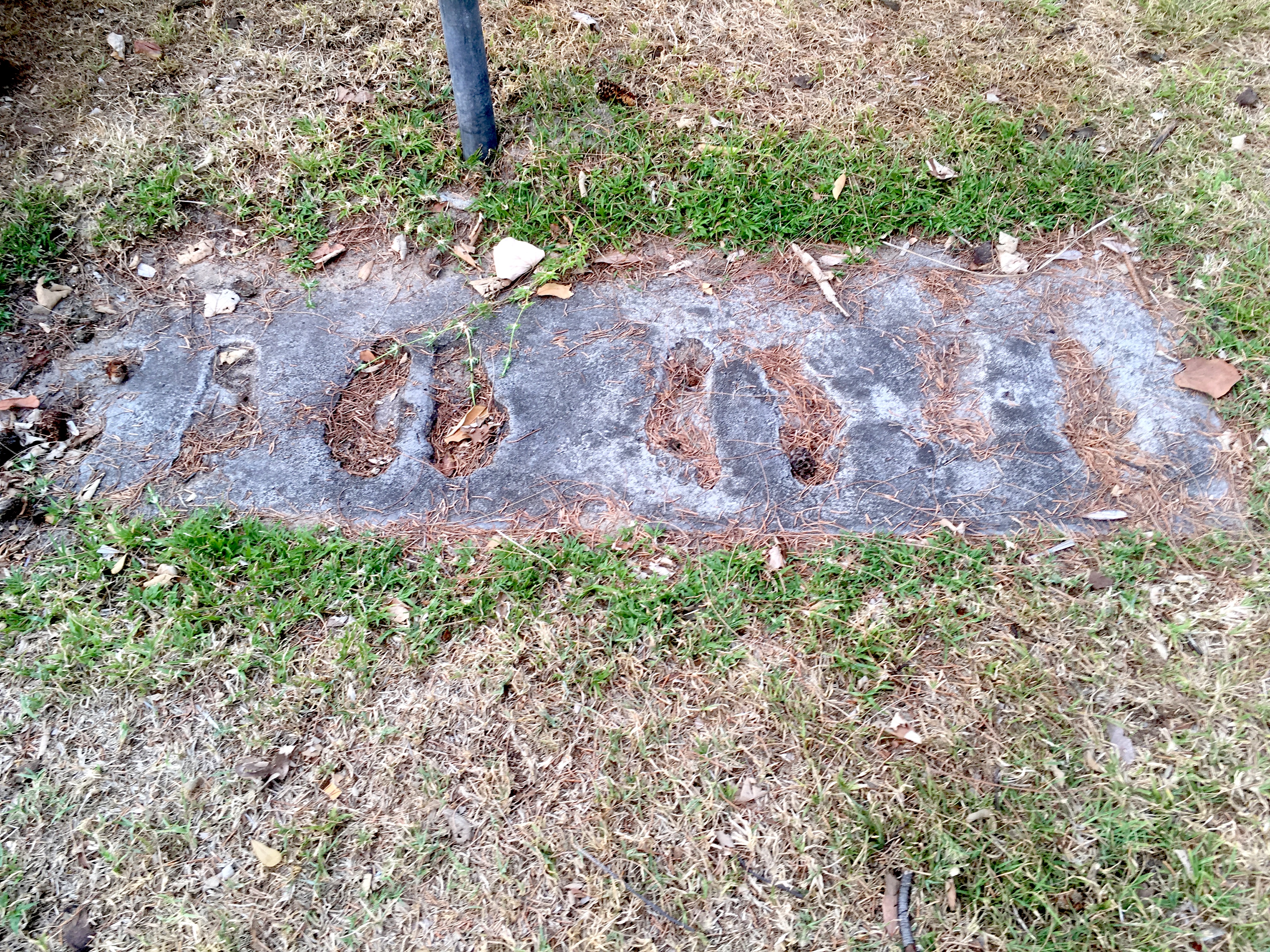
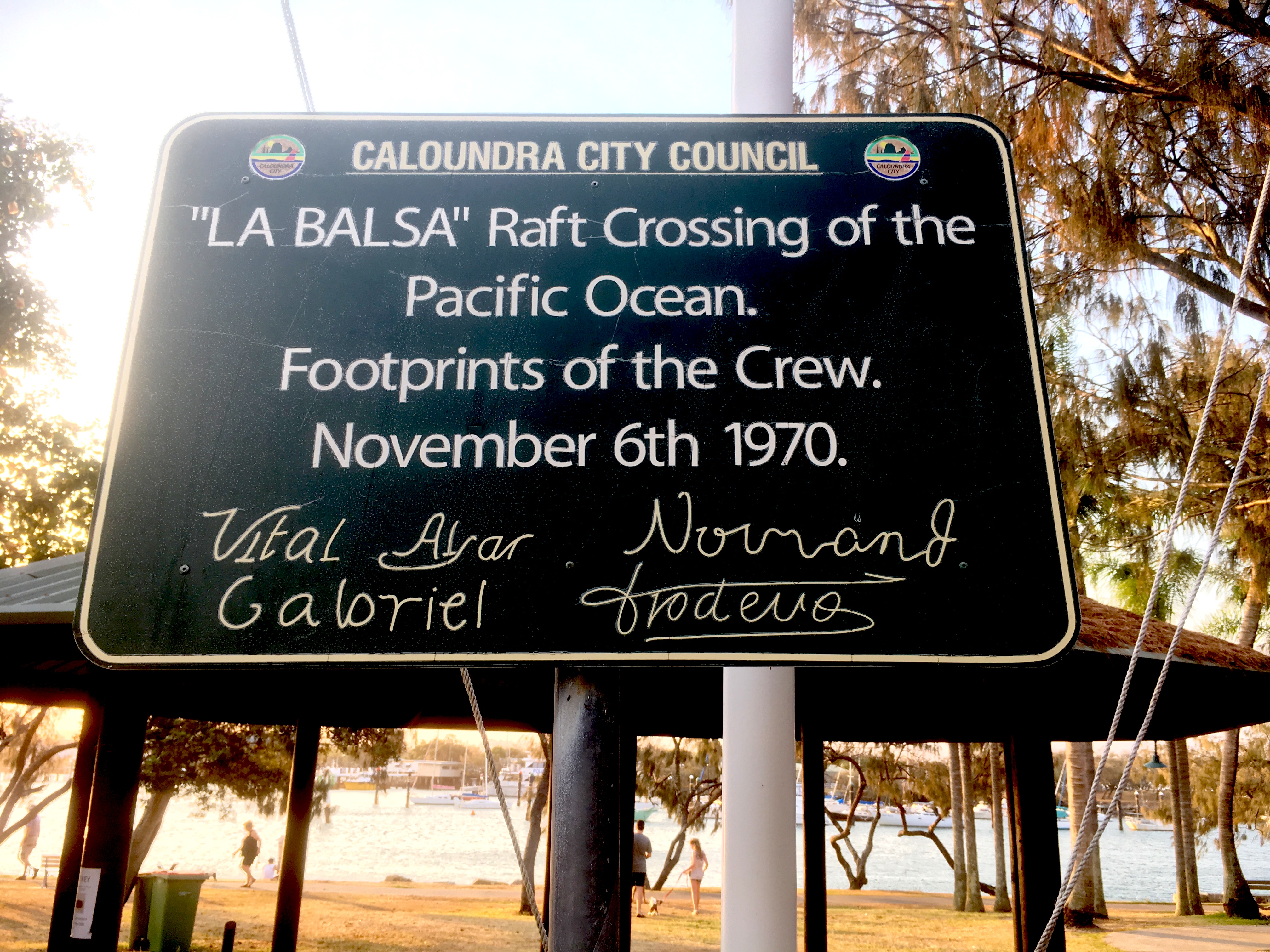
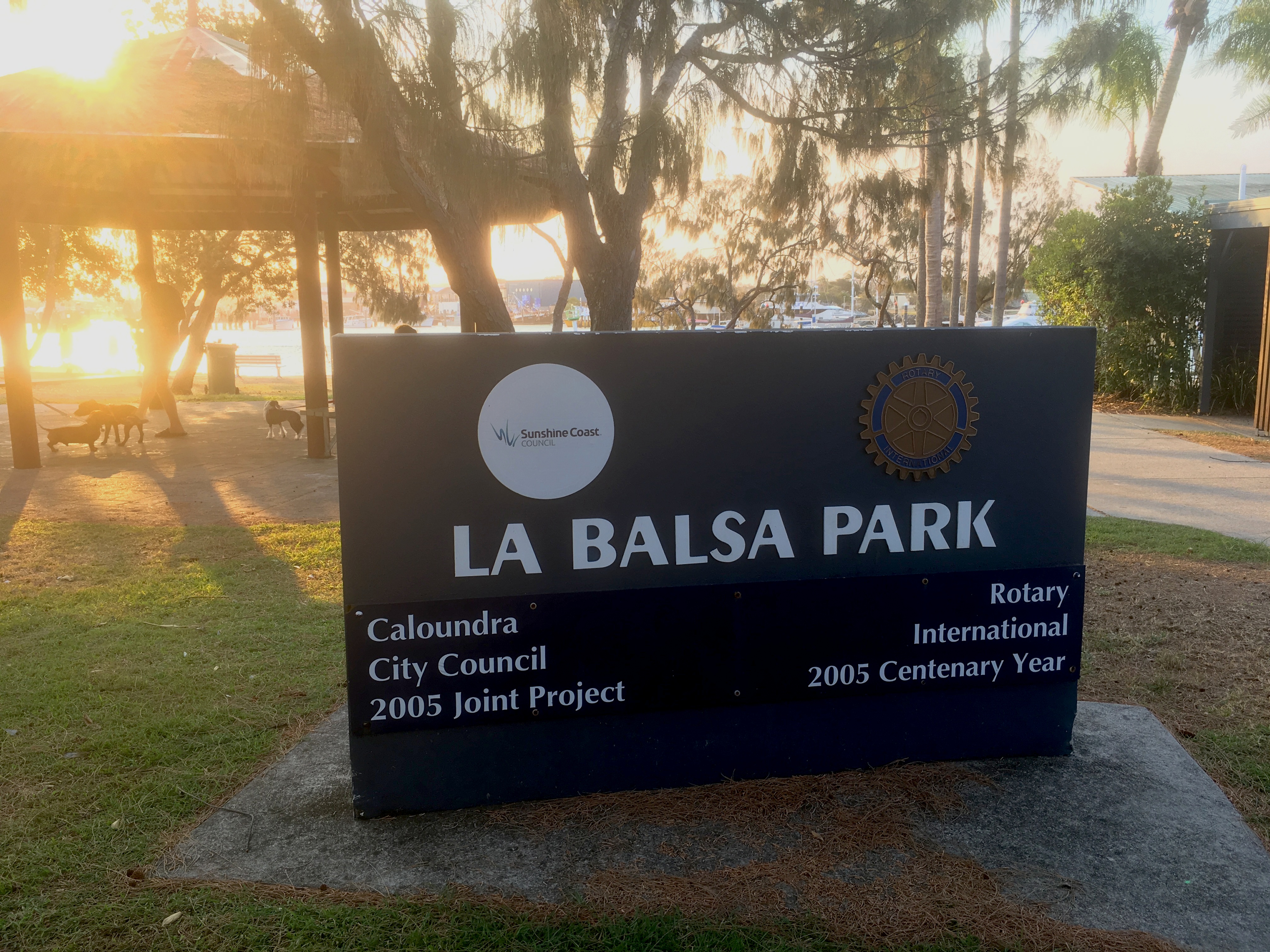
La Balsa (The Rafting) sailed South America on May 29, 1970 and arrived at Mooloolaba on November 5, 1970, after sailing 161 days and travelling 8,565 nautical miles.
I had been intrigued by the story for many years. I held the vision in my mind of a wild-bearded American being washed up on the remote beach.
Yet I had the wrong man, and the wrong raft trip.
That was William Willis who, in two great adventures, rafted single-handed across the Pacific. The first was from South America to Samoa in 1954 in which he sailed 6700 miles – 2200 miles further than Thor Heyerdahl on Kon Tiki.
In a second great voyage 10 years later, he rafted all the way from South America to Australia.
The image I had was, it turned out, of a newspaper photo of him coming ashore at Mission Beach in North Queensland. What is even more remarkable was that he was aged 61 at the time of the first voyage.


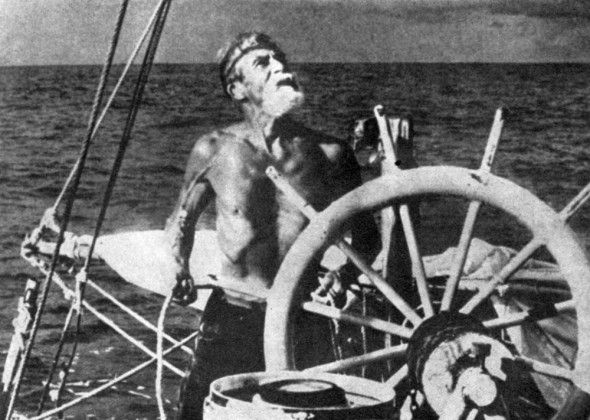
On his second voyage, after 204 days at sea he arrived near Tully in Northern Queensland, completing his voyage on September 9, 1964.
Six years later Marcel Modena, Gabriel Salas Von Godin (Gabriel Garces), Normand Tetreaul and their Spanish captain Alsar Vitale made their historic La Balsa voyage across the Pacific to prove that travel and contact between South America and Australasia was possible – testing the theory that natives could have made the journey in the past.
The historic expedition became the longest non-stop raft voyage in recorded history, almost doubling the distance of the Kon Tiki expedition which travelled from Peru to Tahiti in 1947.
La Balsa was built from traditional materials using traditional construction methods, and endeavoured to prove the feasability of ancient mariners travelling the oceans in these craft.
Nine logs lashed together, a small thatched cabin about 12 feet square and a sail. The size of the raft, not allowing for the 40-foot centre beam, was about 25 feet by 15 feet.
Organiser of the expedition was Rafael Corcuera of Mexico, a close friend of Alsar Vitale.
With Vitale were Modena (France), Salas (Chile), and Tetreaul (Canada). And a cat, Minet.
The four men set out from Ecuador on La Balsa, a raft made of seven logs, on May 29.
After months at sea, the approach of La Balsa to the Australian mainland had attracted large-scale interest.
A Sunshine Coast fishing boat captain, photographer and reporter became the first three people to greet them.
News of the voyage was picked up by the news desk at the Nambour Chronicle – a bi-weekly newspaper that ran from 1903 until 1980 when the Sunshine Coast Daily was born.
Editor Peter “Richo” Richardson rang photographer Ted Robinson late in the afternoon of November 4, 1970 to cover the story.
They chartered the 10-metre sport fishing boat, The Capri, skippered by Don Tracey.
Ted, Don and journalist John Black then set out from Mooloolaba at 2am on the off-chance of finding La Balsa in the ocean.
“Richo was very game to stick his neck out like that and organise a boat,” Ted recalled, now enjoying the Coast’s fishing and boating lifestyle in his retirement.
Skipper Don plotted a course in relation to wind and currents, all the time stressing “it’s a big ocean”.
The pilot boat had been out and couldn’t locate them. There had been a reported sighting of the raft being two miles off Double Island point, north of Noosa.
But the Double Island lighthouse keeper said that was wrong. They could see 20 miles to sea from the lighthouse and had not made any sightings.
Eventually, at 8.35am on November 5, The Capri received a mayday call from an RAAF Neptune search plane and headed 15 to 20 miles north-east of Double Island Point, where they spotted the plane circling.
Ted was first to see the sail. That was at 10.20am. As later reported by John, Don’s first words were, “Get a load of the size of that thing!”

Peter, who lived at Buderim and wrote regular magazine columns into his 80s before moving to the Gold Coast, remained impressed by Don’s feat in finding the raft and towing it into the harbour.
“It really was a fine piece of navigation and seamanship. I think we paid him a whopping $200,” he said.
John Black, now living in Canberra, recalled being very seasick.
“I remember they told us to bugger off initially as they wanted to drift in unaided,” he said.
La Balsa had been at sea for about eight months (five months in a later article … which says it left from Ecuador). The raft appeared to be in good condition and the four-man crew in good health.
Two Australian National Line ships, Lake Sorrell and Iranda, hove to with La Balsa and Capri in the afternoon but continued on their way when seeing the raft was in tow.
The pilot boat Matthew Flinders came out with extra fuel so The Capri could continue the tow to Mooloolaba.
Ted passed his rolls of film to the captain so they could be rushed to land where they were taken from Mooloolaba’s pilot station to Brisbane and put on the wire service.

While towing the raft back to port they heard on the radio news that the co-ordinator of Air Sea Rescue for Queensland had declared the epic journey a hoax … that no-one could make such a voyage and that it was perpetrated by radio operators. There had been no radio contact with the raft.
Little did they know the radio was not working properly and they had kept in touch with radio operators by clicking the handset on and off to create a morse code style of communication.
Ted Robinson’s photos were front page right around the world.
The lead story that morning was how the trawler had found the four men in tattered clothes and now had the raft in tow.
They arrived at Mooloolaba about 10pm and there were media from all over Australia.
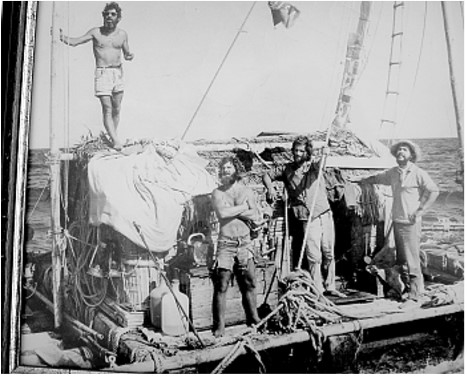
Other media boats had come out to talk to the crew on La Balsa but by that time Ted’s photographs were on their way around the world. John Black’s story was radioed ahead.
The Capri and La Balsa moored opposite Mooloolaba Yacht Club about 10pm to face media from across Australia. Cars were parked the full length of Parkyn Parade as sightseers flocked to see the raft.
There were stories of wild storms, falling overboard, relying on rainwater and fish caught from the ocean and sharks circling the raft.
Maroochy Shire chairman Eddie De Vere was quick to size up the publicity bonanza for the Sunshine Coast and was on hand to greet the four crewmen late on the Thursday night.
The press conference arranged by him at Mooloolaba Yacht Club in the early hours of the Friday morning was considered a master stroke.
There had been chaos as press, radio and television men stampeded to get their stories.
Translator for the press conference was the Chronicle’s Maroochydore correspondent Edith St Clair-Telford.
Melbourne newspaper The Sun newspaper reported: La Balsa drifted back to civilization yesterday. And the crew – were jubilant. Burnt black by the sun after 161 days at sea, they laughed, danced on the tiny deck, and waved excitedly as a RAAF Neptune guided the trawler Capri to them.
The Capri took them in tow … four men in tattered clothes, a charcoal chip of a raft, and a cat named Minette.
In halting English the skipper Altar said: “We do it, We are happy. Maybe one day we do it again. We say we make Australia and we do, next sleep we have is in Australia.’’
To cheers from the Capri, the crew caught cans of beer and packets of cigarettes thrown to them from the newsmen aboard boats. ”We are too tired for beer,’’ Alsar said. Then a rip, a sip and four wide smiles. “Great Australian beer.’’

On the Friday, Cr De Vere was faced with the question: How do you entertain, at short notice, four men whose story has electrified the world?
A huge street parade was organised for Nambour. It was said to be like the Queen’s coronation back in 1954.
Flicking through his scrapbook and photos at home in Maroochydore, Ted Robinson recalled the adventure with a grin.
“After that there was a huge street parade in Nambour,” the Vietnam veteran said. “It really put the Sunshine Coast on the map.”

It was two years before the Cherry Venture ran aground near Double Island Point, 10 years before the Anro Asia ran aground off Caloundra, and 36 years before wildlife adventurer Steve Irwin was killed by a stingray.
La Balsa was eventually towed to the Brisbane River then lifted out of the water and taken to a shopping centre at Mt Gravatt to go on display before being shipped back to Peru.
Now retired, Ted Robinson has been instrumental in getting a memorial at Alexandra Headland for Australian Army bomb disposal dogs.
John Black has carved his own niche in history. Like former Australian prime minister Kevin Rudd and treasurer Wayne Swan, this former Nambour State High student went on to become a politician.
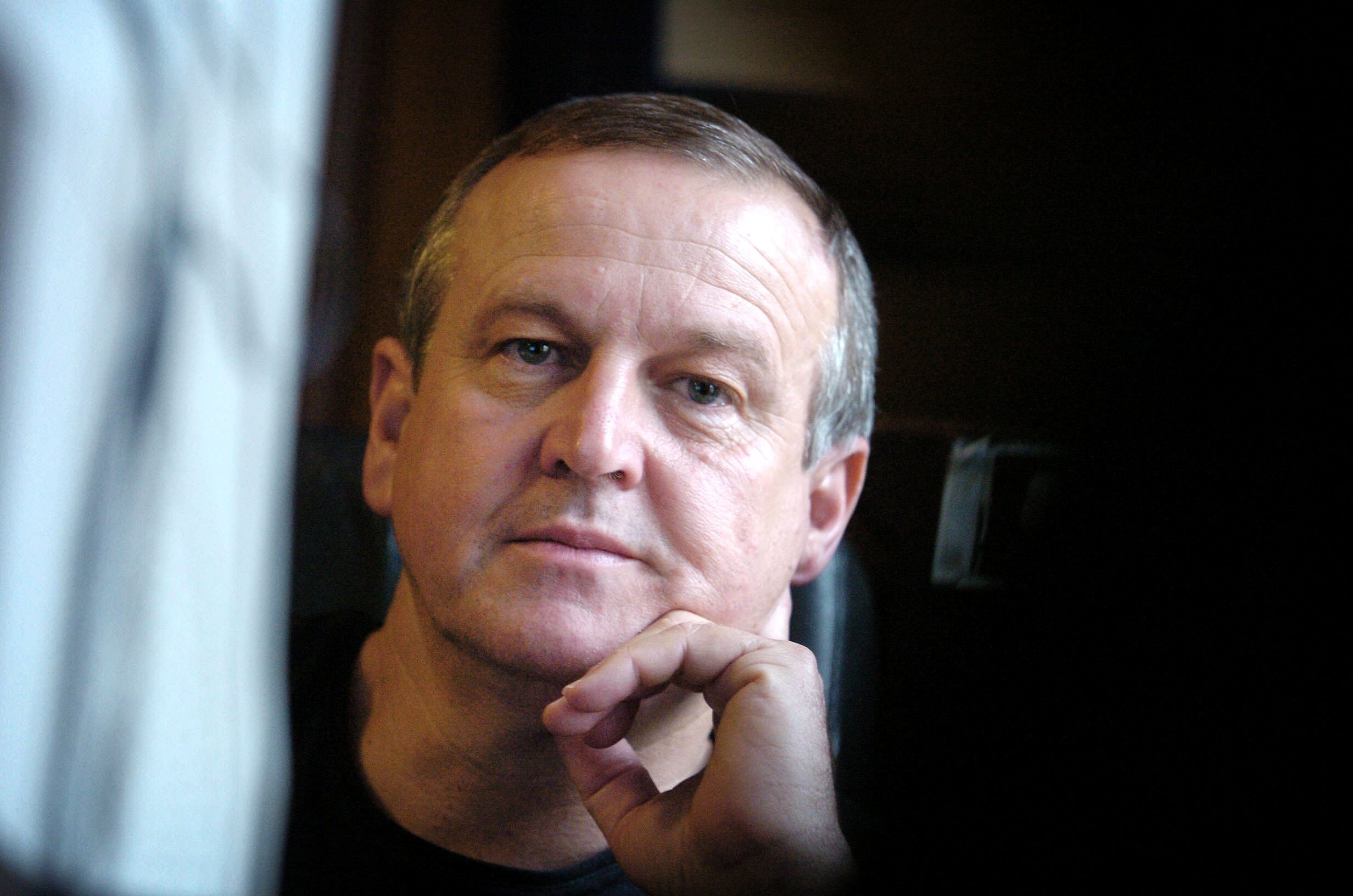
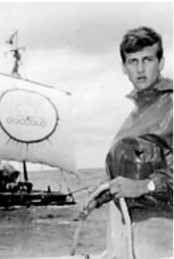
After working at other newspapers and TV stations, he was a Labor Party senator for Queensland from 1984 to 1990. He chaired the Senate Environment Committee and Inquiry into Drugs in Sport, helping establish the Australian Sports Drug Agency under the Howard government to introduce drug testing regimes for professional players.
“Looking back on the visit of La Balsa to the Sunshine Coast, I can only hope I’m privileged to see again the likes of those four men who had the determination and the courage to become part of history,” he emailed from his home in Canberra.
“They didn’t become a part of history in the passive sense. They saw a part of history that they thought was vague, open to challenge. They challenged it and won.”
John went on to be an election analyst, writing regular columns in national newspapers and doing ABC radio spots.
Don Tracey headed overseas and created a successful career based around boats. He was permanently based in Fort Lauderdale, Florida.
His daughter-in-law, Nina Johanson, said he was a project manager for the building of mega yachts throughout the world and had been presented with awards for his designs at Monaco, the mooring site of many luxury yachts.
Spanish captain Vital Alsar didn’t slow down. He returned in 1973 with three rafts, Guayaquil, Aztlán, and Mooloolaba. Las Balsas made it to Ballina on the north coast of New South Wales. One of the craft is preserved in a maritime museum there.
I thought the crew must have just gone their separate ways after that epic voyage … drifted off into the distance so to speak, but the more I look into it the better it gets.
Vital Alsar returned a few years later with three rafts … Las Balsas, making it to Ballina, then he set off on a raft journey down the Amazon and about 10 crossings of the Atlantic in everything from a raft-like trimaran to replicas of the Santa Maria and the other ships in the fleet of Christopher Columbus.
Marc Modena had a wharf named after him in what, I gather, was his home port of Frejus in southern France.
Born in the ancient Roman city in in January 20, 1927, this high-seas adventurer spent eight expeditions trans-océaniques and, among other exploits, drifted 572 days aboard rafts.
Founder of the Explorers’ Club of Canada, of which he was a long time President, the Fréjusien “browser out of time” is listed under the name of the Argonaute in the Guinness Book of Records with 572 days at sea on rafts.
He then took a raft journey down the Amazon for what was the first of his eight crossings of the Atlantic.He’s probably still sailing – at the age of 87.
Marc Modena had a wharf named after him at the port of Frejus in southern France. He completed eight trans-oceanic expeditions, founded and became long-time president of the Explorers’ Club of Canada and was listed under the name of the Argonaut in the Guinness Book of Records with 572 days at sea on rafts.
In 2009 he was about to embark on the last expedition of his friend Vital, from Mexico to Greece. The aim was to connect the Mayan culture with Greek. Due to his high age, he could not participate, but he could see how his grandson Daniel Chávez Modena as part of the crew that carried out the expedition.
At 84 years of age, his life ended on November 11, 2011 in Denia, Spain.


Gabriel Salas had just finished his geology studies at the Universidad de Chile when he decided to hitch-hike with a friend across South America and eventually reached the city of Guayaquil.
His intention was to travel by ship to the Galápagos Islands, as these islands helped so much to shape Darwin’s thinking.
In the wharfs of Guayaquil one day they met three men – a Spaniard, a Frenchman and a Canadian.
He became part of that first voyage to cross the Pacific Ocean and the second voyage a few years later, with three rafts – Las Balsas.
The reasoning was that if a fleet of three rafts could reach the other side of the Pacific and stay together, then larger numbers of rafts could have transported large amounts of people for long distances.
In other words, they could have transported entire civilisations and that cultural interactions during the Pacific Ocean’s pre-history may not have been limited to occasional contacts.
Salas was the navigator on one of three rafts, Mooloolaba, Guayaquil and Aztlan, that sailed/drifted across the Pacific after setting out from Ecuador, in May 1973.
On arrival in Australia, he was offered refugee status by Prime Minister Gough Whitlam because the military junta headed by Augusto Pinochet had imposed a dictatorship on Chile during the voyage.
Salas died from liver failure on October 31, 2015, in a Madrid hospital.
The whereabouts of the other crewman, Norman Tetreault, could not be confirmed but the sailors’ footprints remain in concrete at La Balsa Park for all to remember.
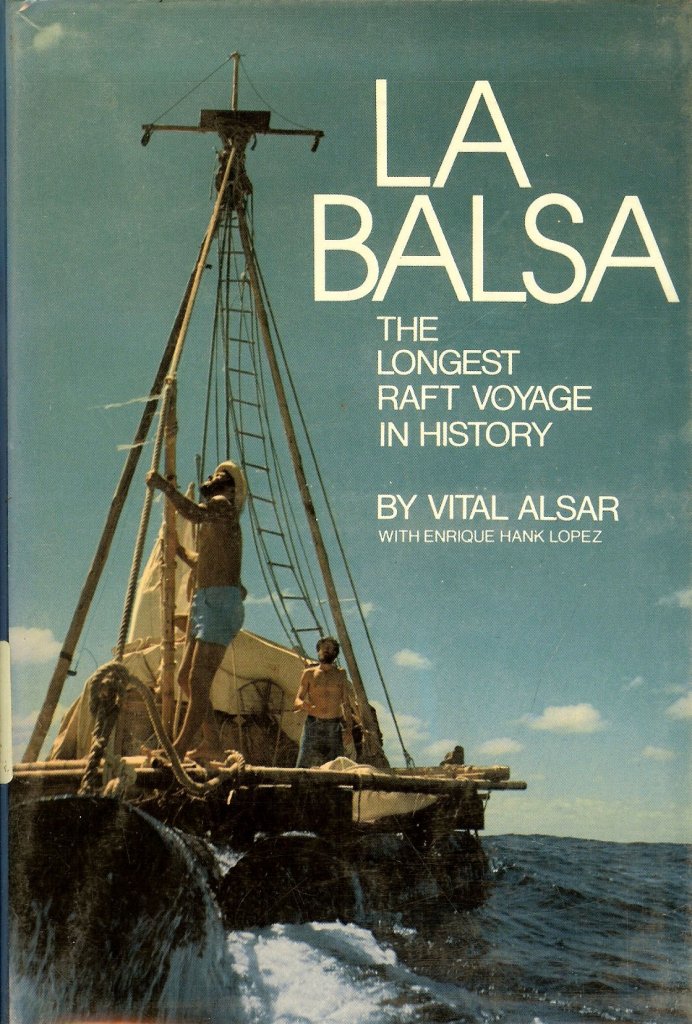
La Balsa is a call back to how people from all areas of the world have come here to Australia.
Such a part of history that these people travelled all that way.
The raft was held together by hemp rope. A bit like the birth of Australia.
Today a gazebo stands at La Balsa Park, which has become the site for Australia Day commemorations and citizenship ceremonies.
Stand there. Look beyond the picnickers and children playing on the shores of the Mooloolah River, catch sight of the small sign with four names on it.
Gaze upon the four sets of footprints set in concrete.
Mementos of the past. Yet they serve as an anecdote of Australia’s make-up.
Listen to the distinctive sound of the breeze in the casuarinas … like the breath of the ghosts from times past.
Discover more at the La Balsa exhibition at the State Library of Queensland.

“They suffered from extreme temperatures – broiling heat during the day and numbing cold at night. Then they had to maneuver through jagged coral reefs between Samoa and Australia. It was only through sheer wit, character and stamina that the crew even managed to survive.” La Balsa: The Longest Raft Voyage in History, by Vital Alsar with Enrique Hank Lopez. E.P. Dutton: New York, 1973
Very interesting, I can remember buying the Thor Heyerdahl book in the â60s and reading it
LikeLike
Yes … Dad bought Kon-Tiki and we all read it .. as ground-breaking an adventure in its day as flying to the moon !!!!
LikeLike
What a fascinating story. I love that there was a cat on board.
LikeLike
Yes … a story for all time … and interesting to see how the lives of those involved have turned out … not sure what happened to the cat though … Minette …
how the world has changed through the years … it’s not is big and as wide as it was then .. time and distance have collapsed …
maybe it takes things like COVID-19 to remind us of our place in the universe and how fragile the planet is …
LikeLike
I have the original front page Brisbane telegraph nov 6 1970, which the four of them signed no cat signature though haha,
LikeLike
I have the original front page Brisbane telegraph nov 6 1970, which the four of them signed no cat signature though haha, if anyone is interested in 😊
LikeLiked by 1 person
That is amazing Kathleen … such a landmark moment in time … great that you have kept the front page … what do you remember of the journey …
email me: leavearly@icloud.com
LikeLike